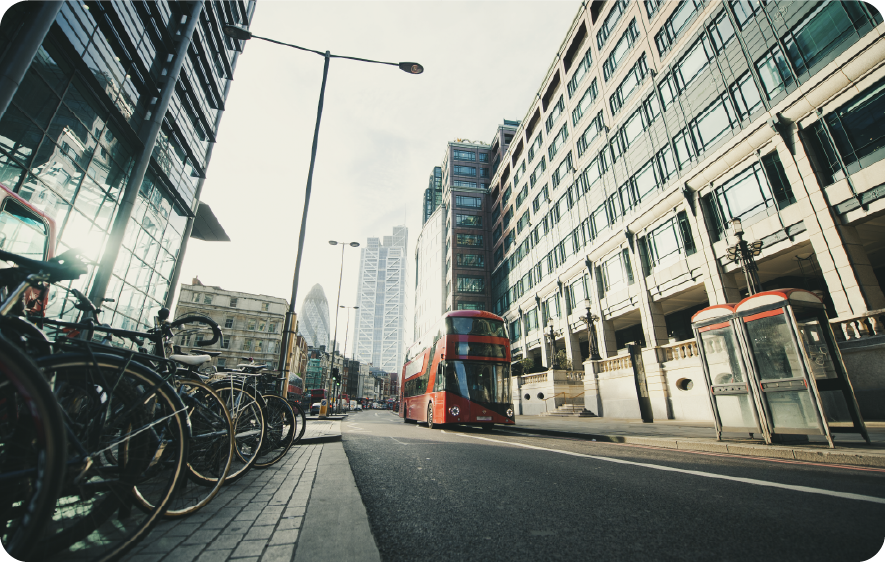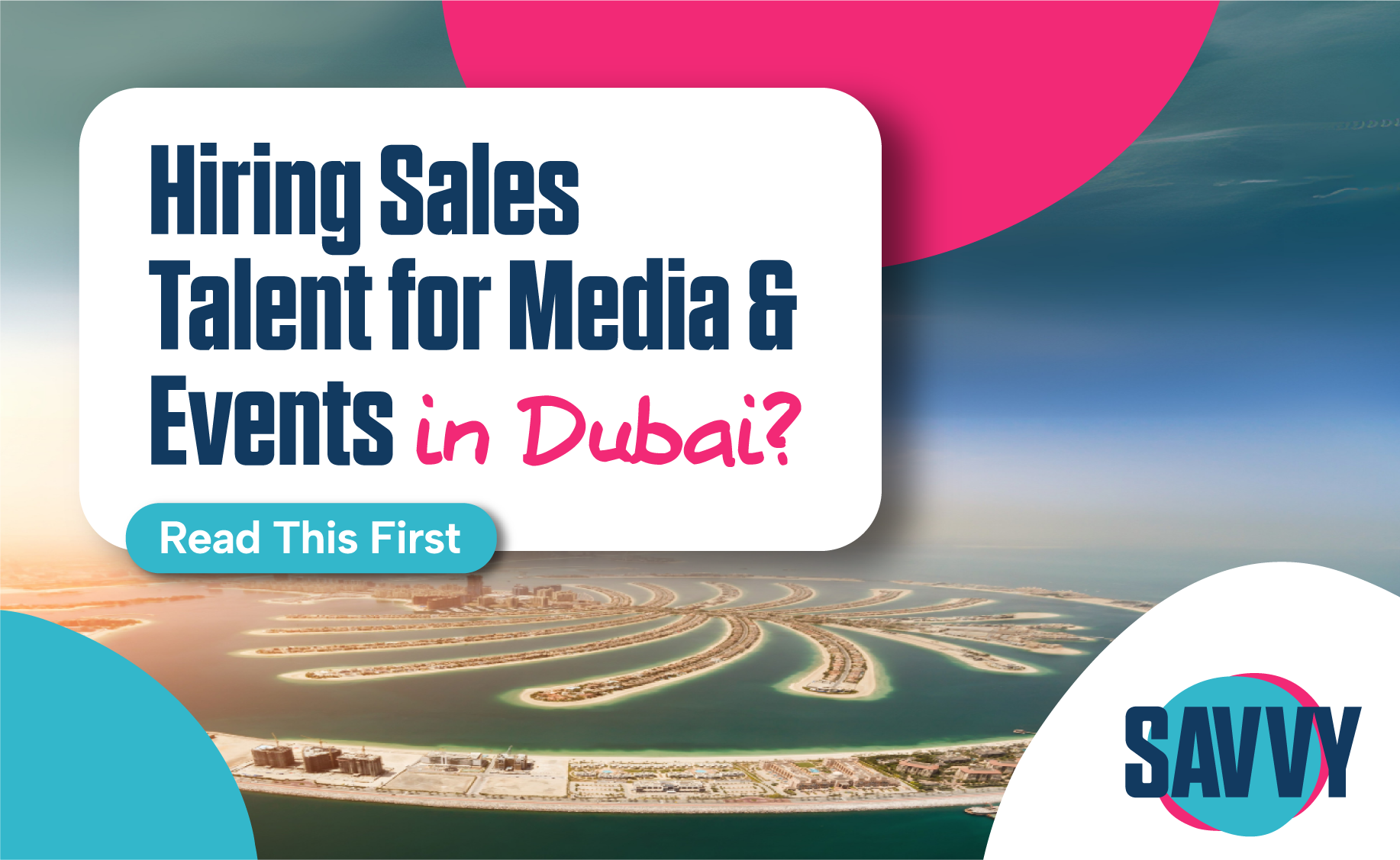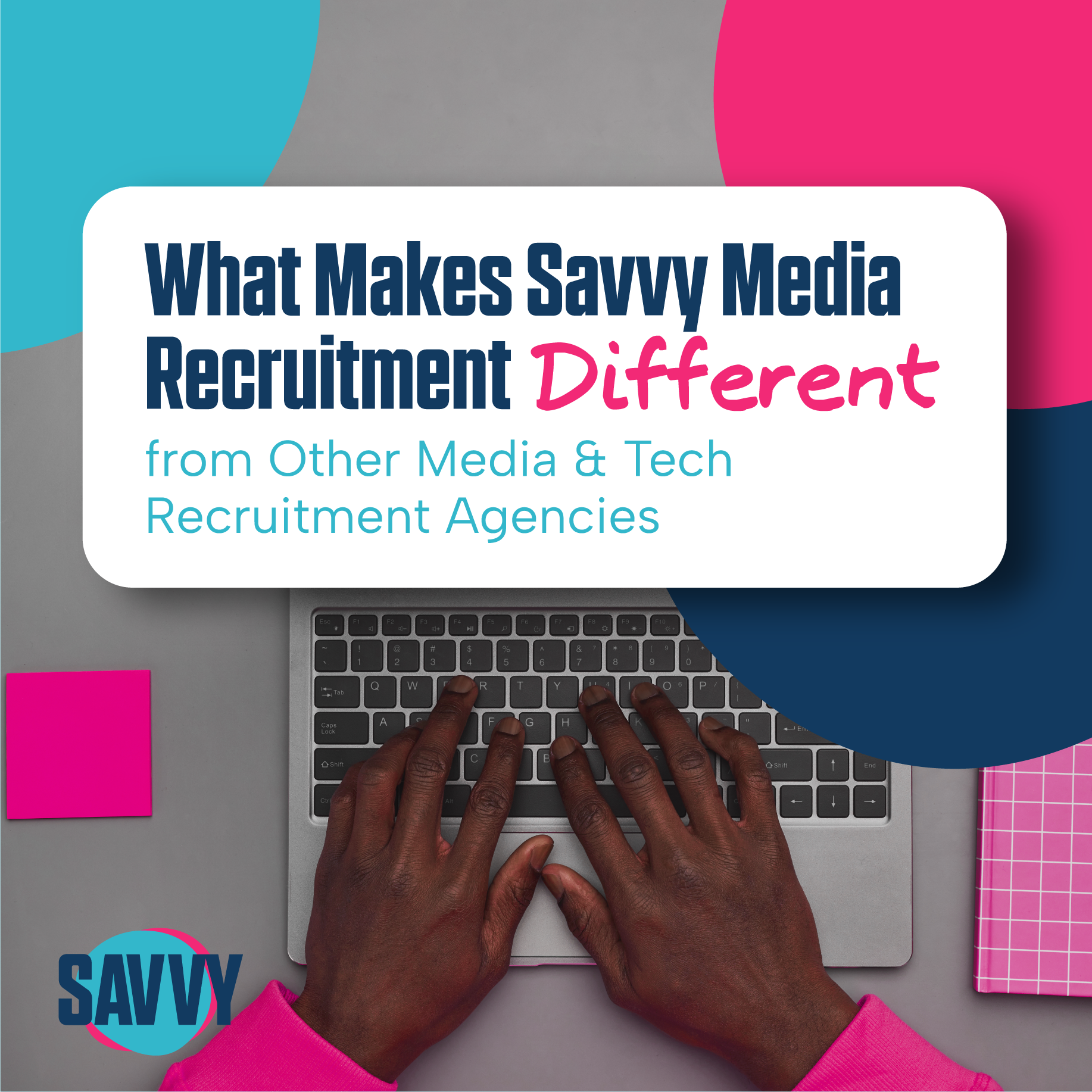SAVVY
Why Diversity in Media Hiring Is More Than Just a Buzzword

As one of the longest running media recruitment agencies in London, we’ve seen a lot of change in the past decade.
The messaging of companies in the creative and media industries has shifted from stereotype clichés and tone-deaf tropes to impassioned cries for social justice and equality. If you’ve been around long enough to remember what media looked like in the '90s, '80s or even earlier – think laddish newsroom culture and boardroom echo chambers – you’ll probably agree this transformation is, frankly, overdue!
And while the media industry is brilliant at calling out other sectors for their lack of equity, diversity and inclusion (EDI), it’s not quite as keen on turning that critical lens inward.
Research on EDI in the creative workforce shows just how far we’ve still got to go. As the Parliamentary Office of Science and Technology (POST) highlighted, toxic (macho) workplace and hiring practices that favour the “I know a guy” school of recruitment are still frustratingly common. Meanwhile, an FT study found that ‘building a diverse workforce’ was a decidedly low priority for media companies, compared to commercial priorities.
But here’s the good news: companies that take diversity-focused hiring seriously are making better business decisions.
Here’s why diversity in media hiring isn’t just the right thing to do. It’s also the smart thing to do.
Diversity drives creativity (and creativity drives profit)
Media is a business of ideas. The best work comes from teams who see the world differently, where there is a meeting of minds from different backgrounds and experiences. Diverse teams bring more original ideas to the table, and crucially, they challenge each other’s assumptions. That’s where the real innovation happens.
Studies have shown that diverse teams outperform homogeneous ones when it comes to problem-solving and creative output. In media, that’s your bread and butter.
For example, this BCG study compared companies with below- and above-average diversity scores: guess which group reported higher revenue from business innovation?
You connect better with your audience
Your audience isn’t a monoculture, so why should your team be? Whether you’re publishing, broadcasting, streaming or producing, you’re speaking to a Britain that is gloriously, messily diverse. If your team doesn’t reflect that reality, your content risks falling flat. Even worse, you could be alienating the very audiences you’re trying to reach.
A diversity-first hiring strategy helps build teams who instinctively understand different communities, cultural references, and points of view. That kind of insight is gold dust when it comes to audience engagement.
Put another way: Having a diverse workforce is essential for not sounding completely out of touch, like a pre-retirement politician trying to use Gen Z lingo or an Oxbridge alumnus trying to write south London video game dialogue from their cottage in the Cotswolds.
It’s a talent magnet
The best talent wants to work in creative and media jobs where they feel seen and respected. Companies with visible and meaningful commitments to EDI attract a both a wider range of candidates and a better-quality talent pool.
And let’s not forget the competitive edge of diversity-focused media recruitment. In a talent-short market, being known as an inclusive employer could be what wins you your next top hire.
It futureproofs your business
The industry’s changing fast. Audiences are evolving, platforms are multiplying, and the next generation of talent is coming in with higher expectations around representation, mental wellbeing, and workplace culture.
Diversity-focused hiring is one of the most powerful tools you’ve got to stay agile, relevant, and genuinely ready for the future of media.
It reduces risk
Heed this advice from your friendly local media recruitment agency: Equity, diversity and inclusion-focused hiring helps with compliance and risk management, too. Companies that overlook inclusive hiring practices may expose themselves to reputational risk, and staff churn, which is a big money sink for any business.
Building equitable and inclusive teams now means fewer PR risks and a more stable, sustainable business model in the long run.
So, how do you actually do it?
Here’s how media and creative companies can start making meaningful progress on EDI hiring –with a little help from those of us who’ve been in the recruitment trenches for a while:
Audit your current hiring process
Are your job ads packed with jargon or coded language that might put off underrepresented applicants? Are your interview panels made up of people who all look the same (and think the same)?
Write job descriptions that do welcome everyone
Drop the “rockstar” and “ninja” talk. Be clear about what’s essential, and what’s just “nice to have” for any media jobs you advertise. The key is to focus on skills, not which academy someone graduated from or where they’ve interned at. The best creatives don’t always come from a glossy background.
Expand your talent pool
If you’re still hiring through the same three contacts or only posting roles on industry-standard sites, you’re going to get the same types of applicants. Work with a recruiter who has access to more diverse networks and communities. Spoiler: that’s us.
Be upfront about your values (and back them up with action)
Don’t just slap a “We welcome diverse applicants” line on your careers page and call it a day. Candidates can smell tokenism a mile off. Show your track record. Talk about internal initiatives. Share real stories from your team.
Train your hiring managers
Bias, unconscious or otherwise, is real, and it shows up in hiring decisions all the time. Overcome it by training people who make hiring decisions, challenge assumptions, and set expectations. Inclusive hiring doesn’t happen by accident.
Make the process more inclusive
Offer interview prep support for candidates who might not be familiar with your part of the industry. Be flexible on interview formats. Consider skills-based tasks over panel grilling sessions. The goal is to find talent, not test nerves. (Reviewing candidate portfolios effectively can help you spot the hidden gems.)
Measure, review, and improve
Track who’s applying, who’s getting shortlisted, and who’s getting hired. If the data’s showing gaps, dig into why. EDI is more of a long game than a one-off thing. But the results are absolutely worth it.
In summary…
Hiring for media jobs gets an instant leg-up with a diversity-focused recruitment strategy. Besides, hiring a diverse workforce helps organisations support the industry’s longevity, cultivates fresh talent, and makes media and creative workplaces happy places to be.
Cheat code: Talk to a Leading Media Recruitment Agency in London
Want help putting diversity at the heart of your hiring? We’d love to chat. As one of the leading Media recruitment agencies in London, Savvy Recruitment has the tools and tenacity to help you hire better.
Whether you’re scaling a creative team and need to hire for permanent roles, staffing up a new project with freelancers, or are just trying to stop your staff room from looking like the guest list from a 2003 media awards dinner, we’re here to help. Give us a call or drop us a message today.

Why Diversity in Media Hiring Is More Than Just a Buzzword
| April 10, 2025
RECENT POSTS
CATEGORIES
CATEGORIES
Sign-up to our newsletter and we will let you know when we publish new articles!





